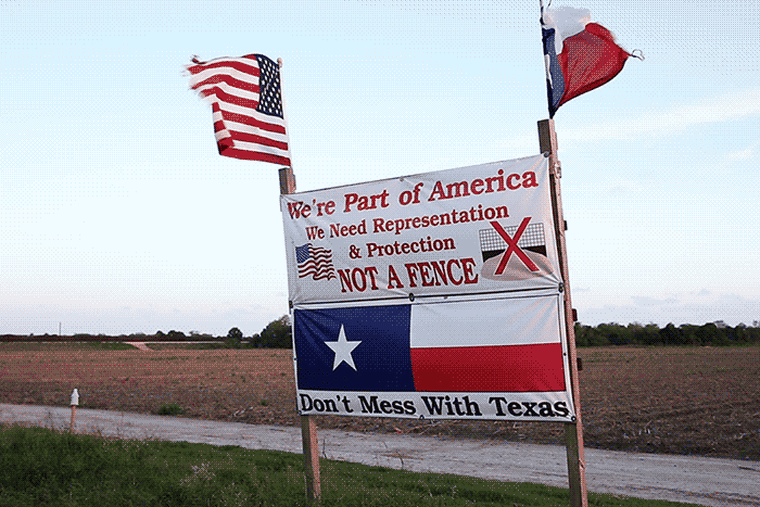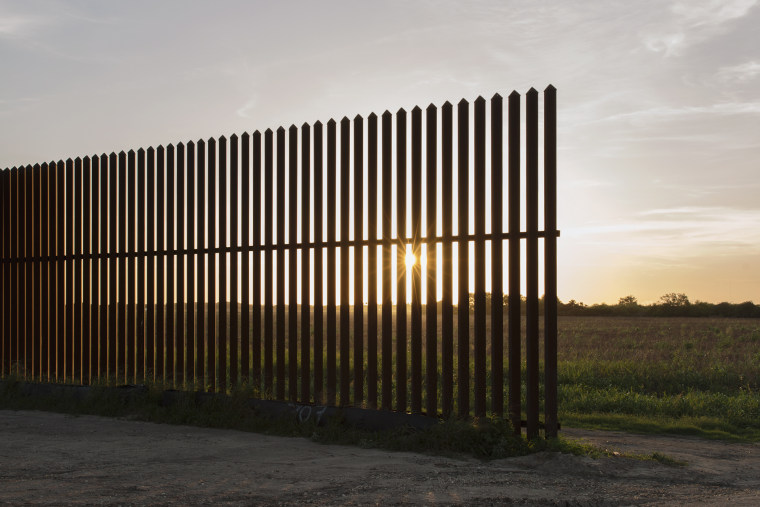
RIO GRANDE VALLEY, Texas — Pamela Taylor first settled along the bank of the Rio Grande River to live out the American Dream. Her husband’s early payments on their two-acre plot of land started out at just $10 each month. It’s where they made their living. Where they raised their four kids.
But instead of there being the quintessential white picket fence to line her front yard, 18-foot steel pillars cut across the levee facing Taylor’s house. Over the last seven decades, she has stood on her porch and watched as immigrants tried to climbed up the banks of the river behind her house and chase her same dream — the barrier built a few short years ago was supposed to keep them out. But like hundreds more landowners with deep roots in South Texas, Taylor’s home was instead trapped inside a no-man’s land.
She technically lives north of the border, yet her house sits south of the fence.
“I’m still in America, but my land is used as a funnel for people coming across the border illegally,” Taylor said from her living room in Brownsville, just steps from the natural line separating two nations.
Over the last several months, she has sat in her living room and watched her TV as politicians argued over ways to “secure the border.” Some have said build a giant wall. Others want a better tracking system at the border to monitor who comes and goes. But Taylor has heard it all.
In South Texas — the most heavily trafficked region of illegal border crossings in the country — projects to secure the border have already run the gamut, from building higher fences to deploying more boots on the ground and beefing up technology for 24-hour surveillance. With each new strategy, Taylor has been left stuck in the middle, frustrated with the millions of undocumented immigrants living in the U.S. and penned-in by a fence that does little to keep them out.
RELATED: Texas allowed to deny birth certificates
“The fence doesn’t do us any good — illegals are still coming,” she says.
Congress set aside $2.4 billion in 2006 with the goal of building 670 miles of fencing along the southwest border in less than two years. Rep. Pete King, a New York Republican who sponsored the legislation, said the fence was “absolutely necessary” and hailed the legislation’s passage as a “milestone” in the mission to secure the border.
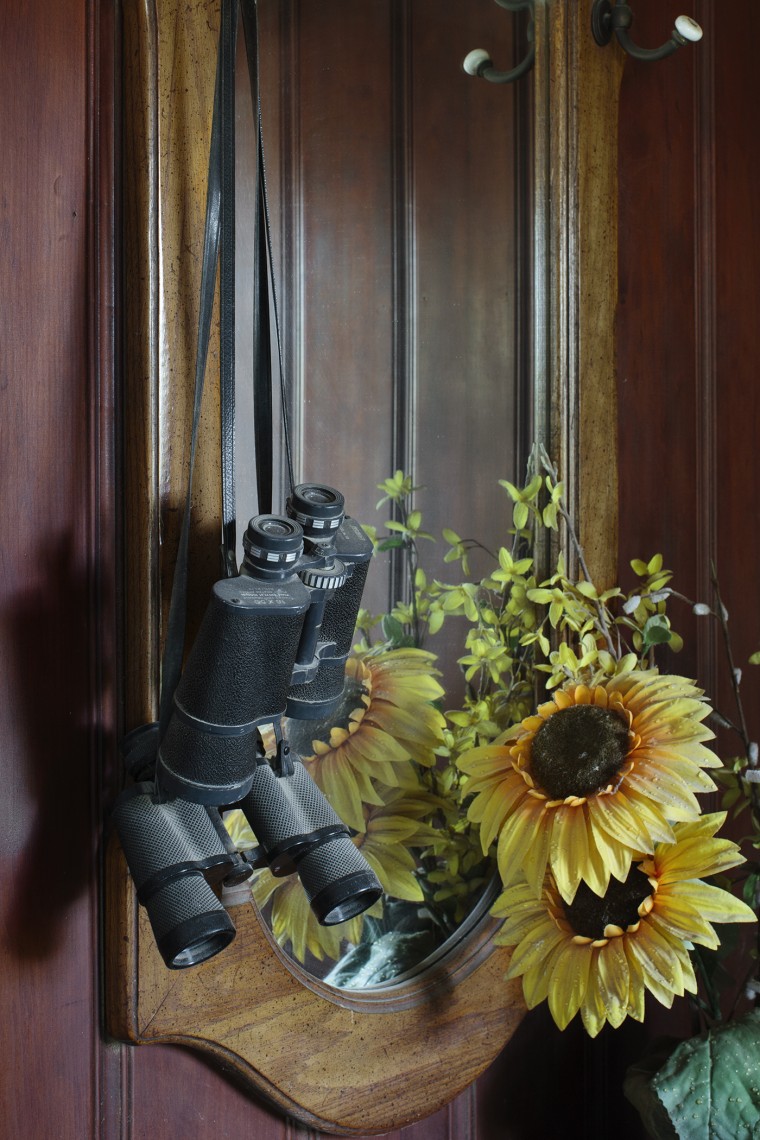
But problems started cropping up almost immediately. A mix of solid border walls and sections of fencing already exist through much of the border along California, Arizona and New Mexico. But unlike those states, where the border is a flat line and cuts through large swaths of desert, the Rio Grande River serves as the natural boundary for Texas. The river twists and winds, sometimes jumping from its path in heavy hurricane seasons. Landowners often live right on the river’s edge. Finding land to build the fence often meant seizing property from Texas towns and residents.
Contractors started breaking ground on the fence project around the same time that Taylor began receiving cancer treatments and was leaving her home for frequent doctor’s visits. Officials from the Department of Homeland Security who didn’t get an earful of Taylor’s complaints about the fence in person received a stack of strongly worded letters at their offices in Washington instead. At community meetings of stakeholders in the project, Taylor’s family would openly vent about the nightmare scenarios running through their heads: What if an ambulance needed to reach their 86-year-old mother, but she’s trapped behind this new fence?
The political debate on immigration reform often hangs on a single talking point: “Secure the border.” It has evolved into a policy priority in Washington, making any plan to deal with the estimated 11.2 million undocumented immigrants currently living in the U.S. contingent on improving enforcement at the border. Lawmakers and candidates typically condemn the dividing line between the U.S. and Mexico as “too porous” and insecure.
So far the conventional wisdom has been to beef up resources at the border. Republican presidential hopefuls have proposed everything from tripling the number of Border Patrol agents manning the Southwest to investing in technology-based surveillance. But candidates have been at odds over how to best protect the physical border: Build a fence, wall or nothing at all?
RELATED: Hillary Clinton picks up key Latino endorsement
Republican front-runner Donald Trump has been the most explicit in his demands by calling for Mexico to foot the cost of building a solid wall along the nearly 2,000-mile border. Others have called his plan too costly and ineffective. Meanwhile retired neurosurgeon Ben Carson has suggested that instead of building one long fence, there should be two.
"Now, what we need to do is look at something that actually works: Yuma County, Arizona,” Carson said during the Republican presidential debate earlier this month. “They put in a double fence with a road so that there was quick access by the enforcement people.”
But if “border security” is supposed to lead to a reduction in the number of unauthorized people living the United States, then that decrease has already started happening. According to the Pew Research Center, the gold-standard institution for tracking the nation’s undocumented population, the number of border crossings from Mexico has leveled off in recent years. And while heightened enforcement has played a role in the decline, experts say the factors are mainly economic — as the U.S. economy sank after the 2008 financial crisis, so too did illegal migration from Mexico. The result has brought net migration from Mexico down to zero, maybe even lower, meaning the number of people entering the country has been less than the number of people who have left.
In the section of the U.S. most heavily trafficked with illegal immigration, the question arises: What does border security look like and can it be achieved?
_________________________

Tie a long rope to the handle of a plastic bucket and you have the tools you need to scale the 18-foot border fence within minutes — hook the belly of the bucket over the bars to the other side with a skilled toss and use the rope as leverage to crawl up the fence like a rock climber. Hand-held wooden ladders brought along the journey do the trick, too. Cartels have fashioned wood and metal ramps to drive full-sized vehicles up and over the fence; border agents in Arizona once found a Jeep Cherokee dangling on top of the barricade like a teeter-totter.
Authorities also once found “a garage-sized hole” cut through the steel pillars. More than 140 tunnels have been discovered throughout the southwest region since the 1990s — some rivaling the one used in drug kingpin El Chapo’s famous prison break — with full ventilation systems, sophisticated routes and others that cut through concrete walls.
Or if you’re in Brownsville, another Texas border community, simply walk a few miles in either direction and you’ll run into gaps where the fence abruptly ends.
“The wall is irrelevant as far as immigration is concerned,” said Scott Nichol, who teaches art at South Texas College and works with the area’s Sierra Club. “You put up walls and people go around them or over them or under them.”
Watching undocumented immigrants evade the fence with ease is like rubbing salt in a wound for some landowners who saw portions of their land cut in half to allow the feds to build the new boundary. Some residents can trace their lineage and landownership to before the Mexican-American War. The U.S. government seized what land it didn’t already own. A decades-old treaty with Mexico required that construction be outside the river’s floodplain, landing the new line for the fence literally in some folks’ backyard.
In Maria Cordero’s neighborhood in Brownsville, it would be impossible for the fence to mirror the actual border — the line of the Rio Grande River bends too sharply and it would require the boundary to cut through the middle of major public roads. Instead two separate sections of the fence run nearly perpendicular to one another, but never meet. Cordero says it confuses her visitors every time because they have to pass through two separate parts of the fence before they get to her home. Friends always ask: “Does this mean we’re in Mexico or still in the U.S.?”
RELATED: Democrats take Trump, GOP to task on divisive immigration rhetoric
“The wall doesn’t make sense. It’s dividing the U.S. and it’s dividing our neighborhoods,” said Cordero, a community organizer. “They spend millions on the fence and in the poorest counties in the United States.”
The Office of Government Accountability issued a report in 2009 finding that the construction costs ranged from $400,000 to $15 million per mile. Costs crept up while Texas was in the midst of a construction boom since experienced labor and materials were in high demand. The variation became clear once contractors began facing new and unwieldy terrain.
Landowners and even entire towns began taking the feds to court, unwilling to give up portions of their land. In other sections, the government took the grounds that it already owned, often cutting apart portions of wildlife preserves. The city of McAllen, Texas, had already been ordered to build stronger levees to prevent future flooding along the river. Instead of building a fence, city officials built a wall, killing two birds with one stone by erecting a boundary that doubles as a levee.
“We ought to call it the ‘Fence of Inconvenience,’” McAllen Mayor Jim Darling said in an interview. “What amazes me is how disjunctive Washington really is with border issues.”
_______________________
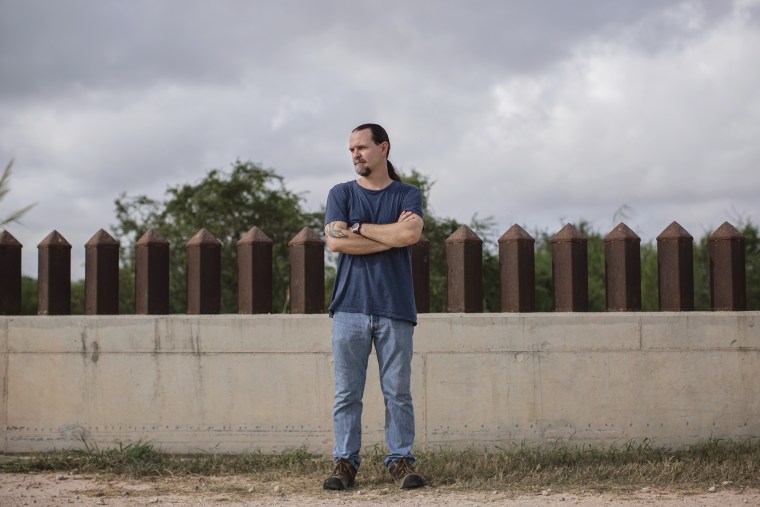
Residents reminisce of the days when the boundary separating the U.S. and Mexico was little more than a blended line in the sand. Families would travel back and forth freely for weddings and parties. Older generations would take advantage of cheap pharmaceuticals on sale south of the border, while young people would stay out partying there on weekends until dawn.
The feel of neighborly unannounced visits across the border took a sharp turn shortly after the Sept. 11 terror attacks, when the U.S. stepped up security measures. Years later, American citizens stopped wanting to travel south as much. The Mexican government had begun cracking down on the cartels. While some drug lords were being hauled to jail, others were killed by lower-level members of their own crews. The rapid power shift destabilized already fragile balances among rival gangs, igniting new turf wars.
“The real border security issue for us is the influence of the drug cartels,” Darling said. “You know all of those drugs are not flowing north through serendipity, it’s heading to the United States because of consumption.”
RELATED: Poll: Large majority of GOP voters support 2,000-mile border fence
U.S. Border Patrol agents seized nearly 2 million pounds of marijuana, cocaine, heroine and meth along the southwest border in 2014 — an eye-popping haul that was still the lowest amount of illicit drugs recovered in the region in more than three years.
The far more nefarious spell cast by cartels on the region has been the role of corruption. Several former law enforcement officials from an anti-narcotics squad in the Rio Grande Valley are currently serving prison time for drug crimes and corruption. The exploitation got so bad on the south side of the border in McAllen’s sister city of Reynosa that its standing police force was dissolved entirely and replaced by the Mexican military.
Still, local business and political leaders have sought to recast perception of the region away from the images of violence seen in headlines and newscasts. A number of border towns boast of being safer and having lower crime rates than most all major metropolitan cities.
“Quite frankly everyone thinks that we’re nothing but a crime-ridden area down here, that it’s not safe to be here, and that’s not true,” said Keith Patridge, CEO of the McAllen Economic Development Corporation.
The legacy of the fluid borders seen decades ago carries on today through the flow of commerce running through the major arteries that connect McAllen and Reynosa. McAllen for years has been known as a destination for wealthy tourists who drive up from Monterey and cash in on American merchandise. Mexican nationals account for roughly 40% of McAllen’s sales tax, Darling says.
The North Atlantic Free Trade Agreement brought a surge of manufacturing operations known as “maquiladoras” in the mid-90s, luring businesses to start production plants in Reynosa to soak up lucrative trade opportunities and cheap labor while maintaining offices just miles away in McAllen.
RELATED: Donald Trump’s border wall would cost billions, experts say
Every morning at around 7:30, traffic picks up at the military checkpoint bridges entering Mexico. More than 2,000 residents travel the reverse commute from McAllen to Mexico each day to work as plant managers for American manufacturing companies. Factories featuring every household brand from Microsoft to Panasonic and Sony to Scholastic occupy major industrial parks throughout the city. One factory is the largest candy cane producer in the world. Another is responsible for producing seat belt parts to major car companies in the U.S.
“We’re continually ranked as one of the fastest growing metro areas in the United States and it came from that dependence, and that recognition that even though we’re on an international border, it doesn’t stop the flow of commerce,” Patridge said. “You have a flexibility that is unique to the border. If the governments really understood the value of the border, they would take better care of it.”
_______________________
The U.S. has stepped up its technology along the border in an effort to bring 21st century resources to it. But pilot programs have come and gone with measured success. DHS was forced to abandon its "virtual fence" program, a technology-based surveillance system designed to alert agents on the ground when migrants were crossing illegally. Administration officials were forced to acknowledge the costs outweighed its effectiveness. This year, a federal audit found similar shortcomings with a surveillance drone program that was found to be expensive and did little to help agents apprehend border-crossers.
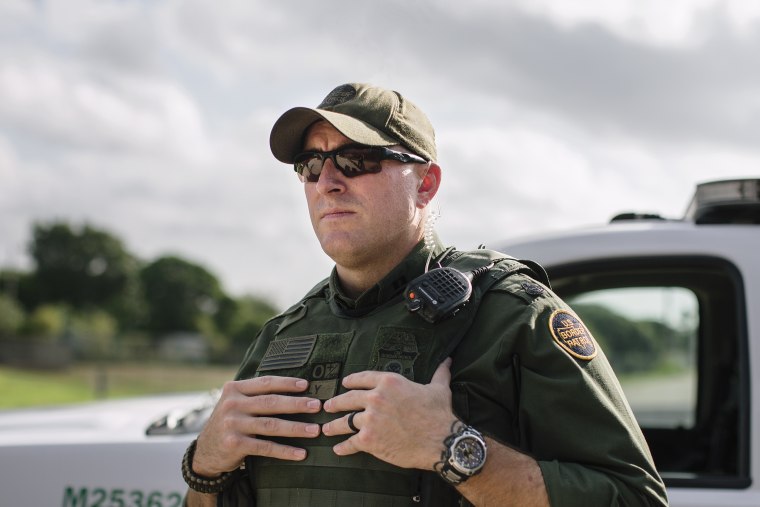
Meanwhile, the number of “boots on the ground” manning the southwestern border has skyrocketed by 94% in the last decade. More than 21,000 Border Patrol agents are now stationed along the 2,000-mile stretch separating the U.S. and Mexico — the highest both nations have ever seen. Budget proposals for the next year top $373.5 million to fund security operations along the Southwest dividing line.
At night, the distant hums of Border Patrol helicopters overhead are a subtle reminder for Cordero, the community organizer from Brownsville, of the growing presence in her neighborhood. She remembers a time when militia patriot groups, fed up with the hundreds of unaccompanied minors arriving at the U.S. each day, would arm themselves to protect the border.
“I thought it was the National Guard — they wore camouflage and had big guns,” she said.
Many residents put politics aside to offer a helping hand to the unaccompanied children who were offering themselves up to Border Patrol agents. But the crisis at the border — and subsequent increase in security — tapped into an undercurrent of fear that rippled through immigrant communities along the border.
For a region where nearly 90% of all residents are Latino, it’s not uncommon for most communities to be personally affected by immigration policies, with an aunt, uncle, sister, or cousin undocumented and living with them.
“Most of our families are mixed-status families. They’ve been here for years. They know no other place,” Astrid Dominguez, advocacy coordinator for the ACLU of Texas.
Taylor, the woman fighting tooth and nail against the border fence, is an immigrant herself. She grew up in England and became a naturalized citizen after falling in love with an American soldier abroad and moving to South Texas. She says her approach to immigration comes from a place of compassion. But when asked if she agrees with current Republican presidential front-runner Donald Trump, who asserts that all 11 million undocumented immigrants currently living in the U.S. should be deported, her answer was instant and unequivocal: “Yes.”
“When I became a citizen, I walked a straight and narrow path,” Taylor says.
Still, if anyone comes to her porch — documented or not — in search of food, the door is open. Two jugs sit at the end of her driveway, one filled with water, the other filled with seltzer. Taylor’s family fills the containers with ice several times a day. “Anybody that comes by — it doesn’t make a difference if they came illegally over the river, they’re Border Patrol, or my newspaper guy — they know they can get water.”
On major holidays, her family hosts block parties, handing out hot dogs by the hundreds in the shadow of a giant sign they had made years ago that reads:
“We need representation & protection, NOT A FENCE."
